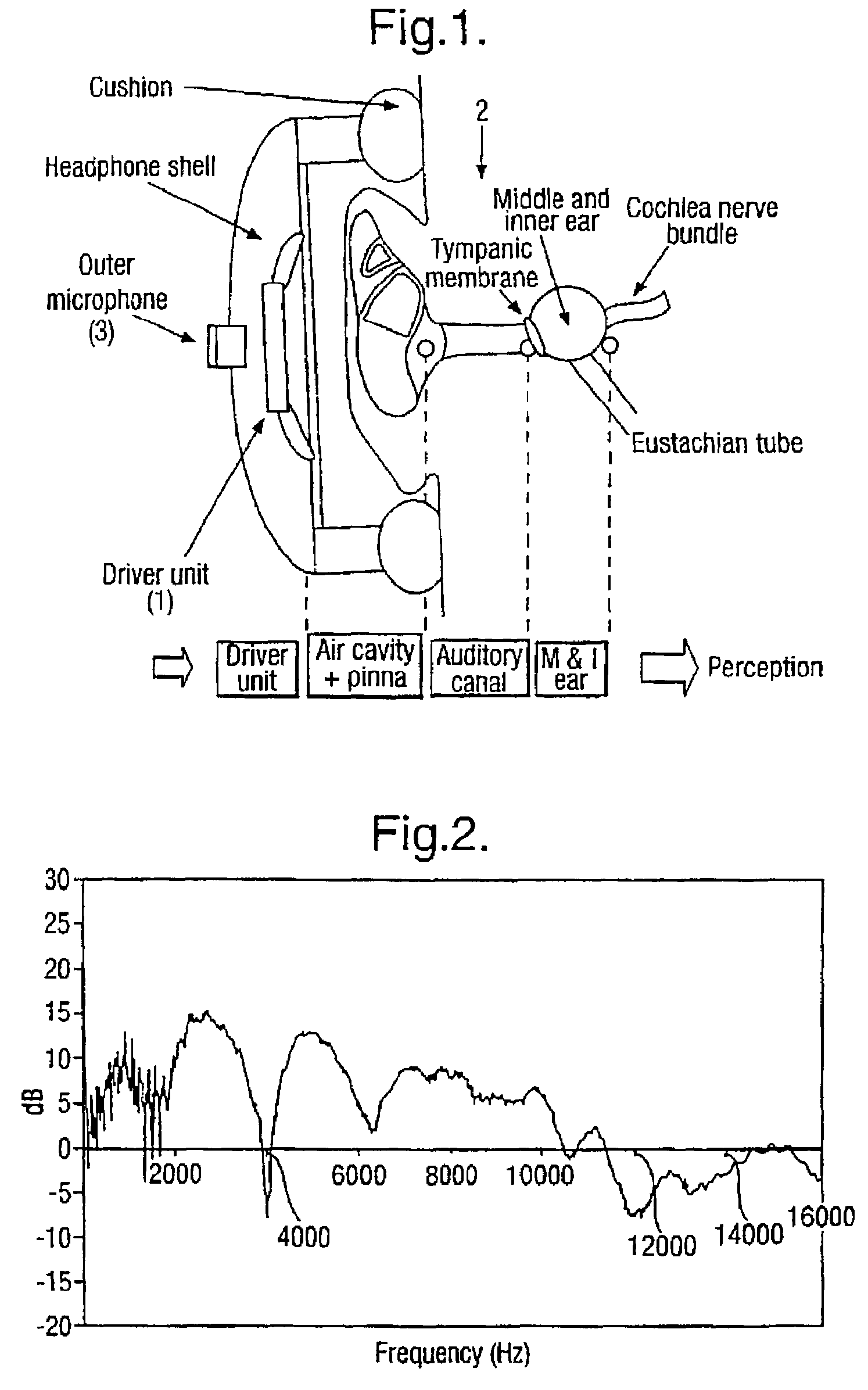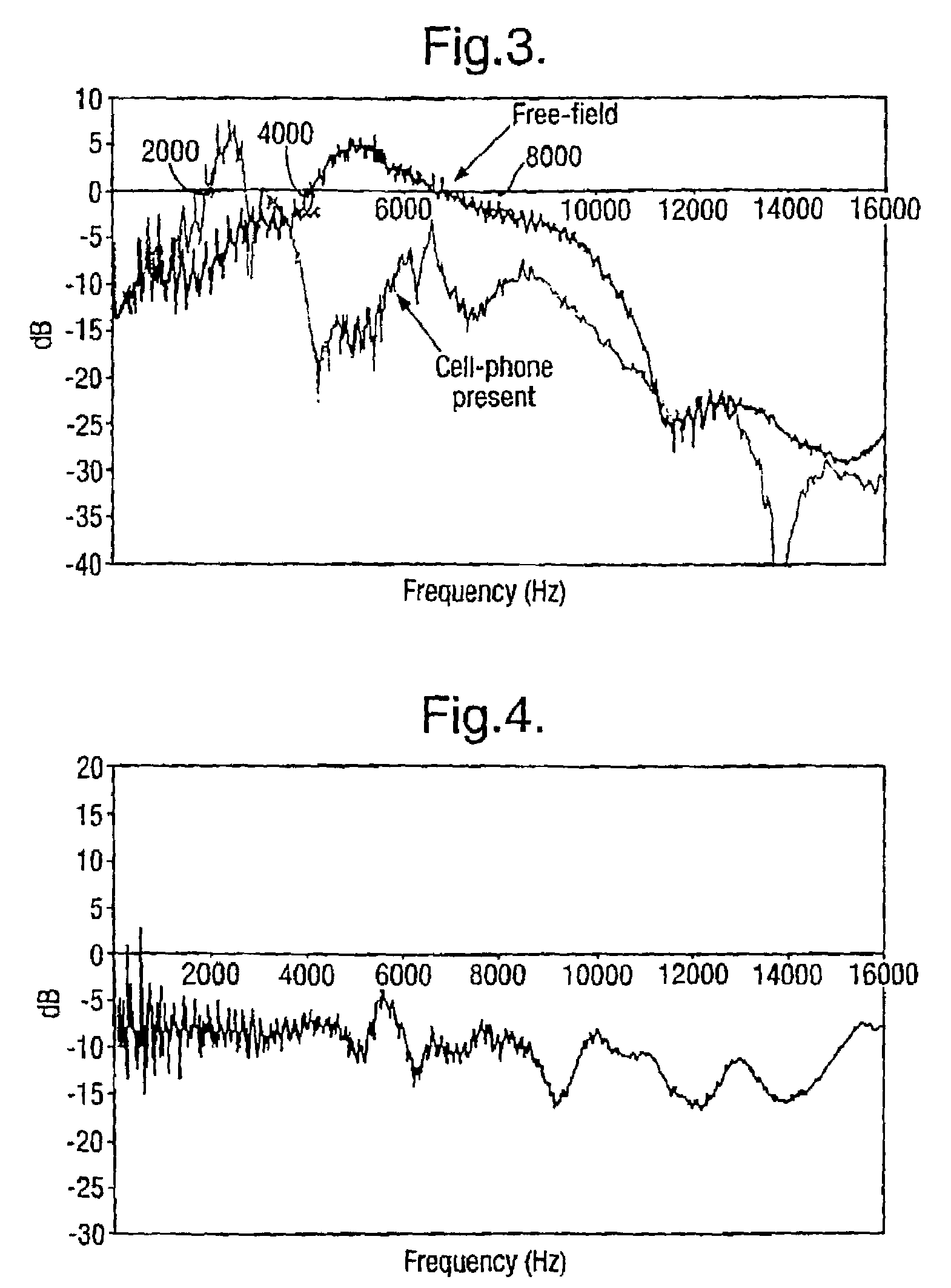Method of improving the audibility of sound from a loudspeaker located close to an ear
a loudspeaker and audibility technology, applied in the direction of active noise control, instruments, electrical transducers, etc., can solve the problem of increasing the noise level, and achieve the effect of reducing or cancelling the noise frequency and mitigate the problem
- Summary
- Abstract
- Description
- Claims
- Application Information
AI Technical Summary
Benefits of technology
Problems solved by technology
Method used
Image
Examples
Embodiment Construction
[0028]The acoustic modifications that the incoming noise signals (and the signals transmitted by the phone transducer) are subject to, will first be described. As far as the inventor is aware, neither of these phenomena have been considered before in the context of noise-cancellation.
[0029]It is known in headphone noise-cancellation arrangements to situate a miniature microphone (3), such as for example an electret microphone, on the outer section of each of the left and right headphone shell units (FIG. 1), and this provides the noise cancellation reference signal. (Microphones of this type are essentially omni-directional.) The microphone is typically spaced about 5 cm from the side of the head. As a consequence, the microphone is effectively subjected to two sound sources: firstly, the incoming ambient noise; and secondly, a back-reflected wave from the side of the head. These two waves undergo constructive and destructive wave addition. Consequently, the first (and lowest) destr...
PUM
 Login to View More
Login to View More Abstract
Description
Claims
Application Information
 Login to View More
Login to View More - R&D
- Intellectual Property
- Life Sciences
- Materials
- Tech Scout
- Unparalleled Data Quality
- Higher Quality Content
- 60% Fewer Hallucinations
Browse by: Latest US Patents, China's latest patents, Technical Efficacy Thesaurus, Application Domain, Technology Topic, Popular Technical Reports.
© 2025 PatSnap. All rights reserved.Legal|Privacy policy|Modern Slavery Act Transparency Statement|Sitemap|About US| Contact US: help@patsnap.com



